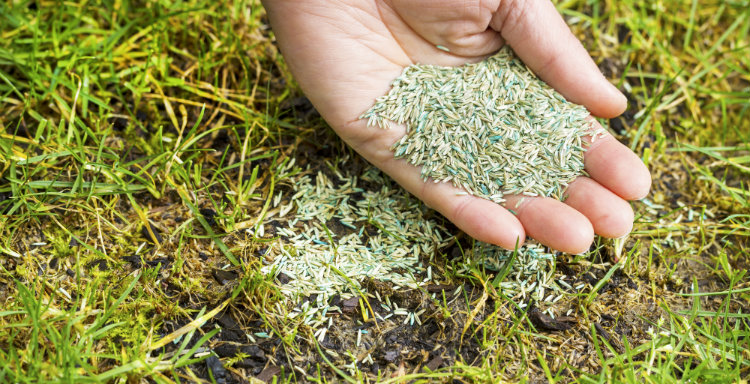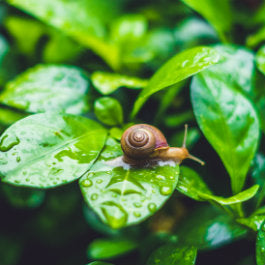
Gardening is one of life’s greatest pleasures, but whether you’re a novice or a pro, there are a few common problems that can get in the way. Knowing what soil type you have, how to prevent pests and how to identify problems with your plants can be useful in side-stepping any future issues, but it’s never too late to rescue a slightly forlorn yard. To help you win the war on weeds and other garden gripes we’ve answered some of your common backyard woes.
Weeds have taken over

Unfortunately, the war on weeds can never truly be won. Even after the greatest of efforts to rid garden beds of these spontaneous invaders, there’s no guarantee that they won’t rear their ugly heads again in the future. However, it’s not all doom and gloom. You can take control of weeds by implementing a regular weeding schedule, particularly in the wet season when weeds tend to spread like wild fire. Pulling them up – roots and all – is the quickest and most effective way of eliminating the problem, and Hoselink’s Trowel, Fork and Weeder set will make light work of this tedious job. There are other methods too, such as spraying pesticides, laying mulch, smothering them, or using a homemade solution of water and vinegar to rid pathways and pavers of the unwanted green stuff.
I don’t know what type of soil I have

There are six main types of soil: loamy, chalky, silty, sandy, clay and peaty. There are a few factors that can determine the type of soil you have, including the climate where you live, the conditions surrounding your garden – i.e. if you’re on the floodplain of a large river or at the top of a hill, and organisms such as the fauna you have and human activity around the soil. You can usually tell which type of soil you have by the look and feel of it. For example, clay soil is hard when dry and lumpy and sticky when wet, peaty soil is dark in colour, and chalky soil is usually stony. However, to diagnose exactly what type of soil you have it’s a good idea to buy a home test kit or take a sample along to your local nursery. Once you understand your soil type you can then plant accordingly or take steps to enrich and improve the earth in your yard.
 My plants are dying
My plants are dying
If your plants are looking a little worse for wear then it is most likely due to over- or under-watering, or disease. Getting watering right is trickier than you might think as there are multiple factors that determine how much moisture your plants need, including the weather, type of soil, drainage, plant species and even water restrictions that might be in place in your area. In hot weather it’s a good idea to water plants in the morning, before the garden gets too steamy, allowing moisture to seep into the soil rather than evaporate. In the cooler months, the need for water reduces, though it’s still important to keep an eye on any crops and fruit trees that may need supplementing more often than the rest of the garden.
If watering isn’t the problem, then it is likely due to a disease that your plants are wilting. Everything from rot and blight to insect infestation and mould can cause problems with plants, and each one needs to be dealt with in its own way, so check symptoms of the affected plant online or with an expert before taking action.
I have a patchy lawn

There are many reasons why your lawn may be patchy or thinning out in places, including excess wear from high foot traffic, dog urine, lack of sunlight, an insect problem or neglect. Though most can be resolved relatively easily, it’s important to fix the cause before you look at rectifying the problem. Scattering lawn seed is one way to get back to a lush lawn, but if you haven’t fixed the cause then patches will likely reappear time and again. If your lawn is partly shady due to overgrown or ill-placed plants, then these can be pruned back or transplanted to allow for more sunlight. If you have a dog, then it’s a good idea to train it to relieve itself elsewhere or hose the lawn down as soon as your pet goes to the toilet. For worn areas, consider installing a pathway to prevent further wear, or if you think the problem is due to lawn grubs or other insects then you may need to get a sample of the soil tested. To keep your lawn looking healthy year-round it’s a good idea to mow it regularly in summer, and allow it to grow more freely in winter, apply a lawn feed or fertiliser twice per year, water it with a sprinkler in hot weather and aerate it at the start of spring to encourage new growth.
Pests are eating my plants

Everything from rats and birds to caterpillars and slugs can be eating away at your garden and spoiling your hard work, and unfortunately stopping them can be tricky, though not impossible. Physical barriers such as netting can be necessary to stop birds pecking at seeds or tearing up plants, while companion planting is a good natural remedy for deterring insects – for example, chrysanthemums contain organic pesticides while lavender is known to deter mosquitoes, so planting them amongst beds you want to protect is worthwhile. For caterpillar problems, it’s a good idea to inspect your plants daily. You can physically pick any caterpillars off your plants (wear gloves), pinch off affected leaves, cover your plants with netting or treat your plants with the correct organic solution that won’t harm the ecosystems around it.
My veggies won’t grow

If your veggies aren’t cooperating then it is likely you’ve either chosen unsuitable varieties to grow for the time of year, climate or soil type, you’ve overcrowded your veggie patch, or you’ve chosen the wrong spot to plant in. Most fruit and veg will need at least six hours of direct sunlight per day to grow successfully, as well as a sheltered spot away from strong winds, plenty of space, well-drained soil and good quality compost. Before you plant any veggies it’s vital to prepare the soil, ensuring it has a good pH balance, good drainage and is free from any rocks or stones that could interfere with plant roots. While your plants are growing it’s equally as important to water them regularly, without drowning the soil, and to pull up weeds at first sight to prevent them from stealing essential nutrients. Keep an eye out for any pests and diseases too.
My tomatoes are rotting

If your tomatoes are rotting then, unfortunately, you’ve become victim to blossom end rot. Over-fertilising and incorrect watering is a one-way ticket to an unhappy tomato plant, when the likes of blossom end rot will appear on the bottom of your fruits due to a calcium imbalance. This is usually caused by fluctuations in moisture, too much nitrogen in the soil, or an imbalance in the pH level. It will look like one end of your fruit is brown and wet, and can spread to other fruits too. Protect your crops from strong winds, check the pH of your soil is correct for the plant, mulch well and water adequately to prevent the problem from occurring again.
.jpg) How do I possum-proof my garden?
How do I possum-proof my garden?
Love them or hate them, possums are a protected species, and as much as they might intrude on your property and eat away at your garden, you must not harm them. However, you can take steps to deter them. As a nocturnal creature, possums prefer to come out in the dark of night, so installing a motion sensor light that will turn on when a possum crosses the threshold will help to scare them off. Providing a suitable nesting place can also deter them from making a home in your roof, whilst a strong scent, like garlic or menthol, smeared around the plants you wish to protect will help put possums off eating your garden for dinner!









